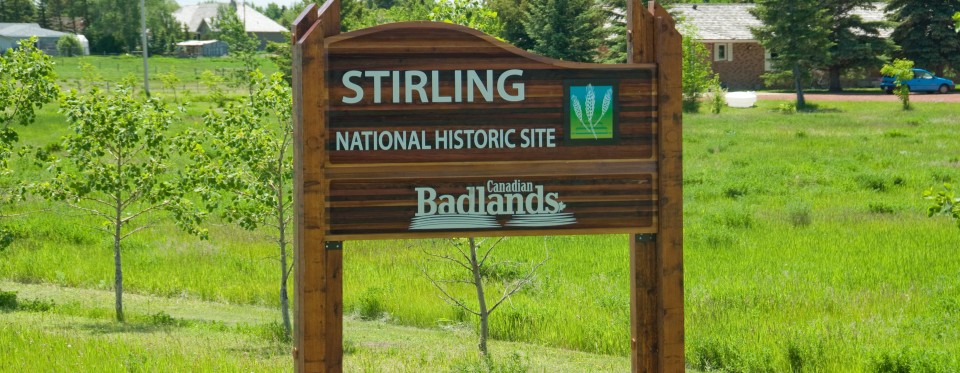Current Temperature
-2.6°C
Stirling’s 125th Anniversary celebration in 2024
Posted on February 1, 2024 by admin
By Heather Cameron
Westwind Weekly News
The Village of Stirling celebrates its 125th anniversary this year.
According to Village of Stirling Mayor Trevor Lewington, and the Village of Stirling website, a group of 30 settlers arrived in Stirling on May 5, 1899. The group came because of a contract for a canal between the Alberta Irrigation Company and members of the Church of Jesus Christ of Latter-day Saints.
By November 14, 1899, the contract was completed, and the water gates were opened at Magrath. The completion, however, caused hardships in 1900 because no money was being earned by the settlers; although Church officials in Utah had been told that the two settlements could sustain themselves.
To solve the issue, member of the Church, Theodore Brandley contracted the settlers to build 12 miles of rail tracks between Stirling and Cardston, again creating stability in the economy.
Eventually, on September 1901, the settlement of Stirling, now with a population of 400, was declared a Village. The Village’s founder, Lewington says, is Theodore Brandley, as he arrived with the first group of settlers from Utah. The Village of Stirling is today recognized as one of just three communities in Canada with status as a National Historic Site.
According to Page 1 of a narrative history created by Golder Associates (Western Canada) Ltd in March 1997 titled ‘Stirling Agricultural Village National Historic Site: Conservation and Presentation Report”, the Historic Sites and Monuments Board of Canada Recognized the national historic significance of Prairie Settlement Patterns in 1989. Following the assessment of several different forms of prairie settlement, five distinctive patterns were commemorated. These included the Metis’ Riverlot Settlement at Batoche and Riel House National Historic Sites; the typical Prairie field patterns defined by shelterbelts at Motherwell Homestead National Historic site; the “four corner” Ukrainian Settlement Pattern at Gardenton, Manitoba; the Mennonite Street Village at New Bergthal, Manitoba; and the Mormon Agricultural Village at Stirling, Alta. Stirling was identified as the best-preserved surviving example of the distinctive settlement pattern associated with Mormon settlement areas in the dry land farming district of southern Alberta.
Stirling’s distinctive cultural landscape documents an important settlement pattern. Large lots, wide streets, shelter belts, and roadside irrigation are a few of the easily visible features that define Stirling’s unique historic place. Stirling is also an active, thriving community and the responsibility for managing and maintaining this historic place lies with the residents of Stirling. In view of this fact, the Historic Sites and Monuments Board recommended that Parks Canada seek to enter into partnership with the Village of Stirling and other interested parties to ensure, through cooperative means, the protection and interpretation of the historic resources within the village.”
In Page 9 of that same report, it states that the Historic Sites and Monuments Board of Canada “encouraged the program to work in consultation and cooperation with the community and other heritage agencies to seek ways of ensuring that the resources that define the historic place continue to survive. These recommendations, approved by the Minister responsible for the National Historic Sites Program, indicate that commemorative initiatives at Stirling should address both aspects of Stirling’s national significance…”
Lewington says that the Village of Stirling will be holding a large community celebration for their anniversary during their annual summer festival – Settler Days – that will run from July 18 to 20th, and there will be a number of special events at this time focused on recognizing this important milestone. the Community Events Committee is hard at work developing the program. Scott Donselaar, the Chief Administrative Officer for the Village of Stirling, says that during the Settler Days event, the Village will be hosting an outdoor concert featuring Trevor Panczak on the Saturday night.
“While we’re proud of our past and our status as a National Historic Site, we haven’t let the grass grow under our feet,” said Lewington. “Stirling has continued to grow through the years and is now the largest Village in Alberta by population at roughly 1,300 people. We have a highly regarded K-12 school that was modernized in 2018 that is the core of our community. Supporting our school ensures a workforce for the future. High-speed fibre optic broadband is available to most homes and businesses. It is possible to be part of the big economy or work from home because of this connectivity. We’ve moved our municipal buildings and facilities to be electrically net zero through solar which has helped reduce our operational costs.”
Stirling, Lewington says, is like other parts of rural Alberta where a sense of belonging and community spirit matters and is clearly evident.
The Village, Lewington says, is also fortunate to have received funding under the Southwest Alberta Blackfoot Signage project and will soon be installing signage recognizing Stirling’s Blackfoot name.
“Our tagline of ‘where families thrive’ is based on the fact that we have a safe community where folks can escape the pressures of the city to live a more relaxed country lifestyle while at the same time easily commute for professional jobs and other activities found in larger urban centres,” said Lewington.
Leave a Reply
You must be logged in to post a comment.

